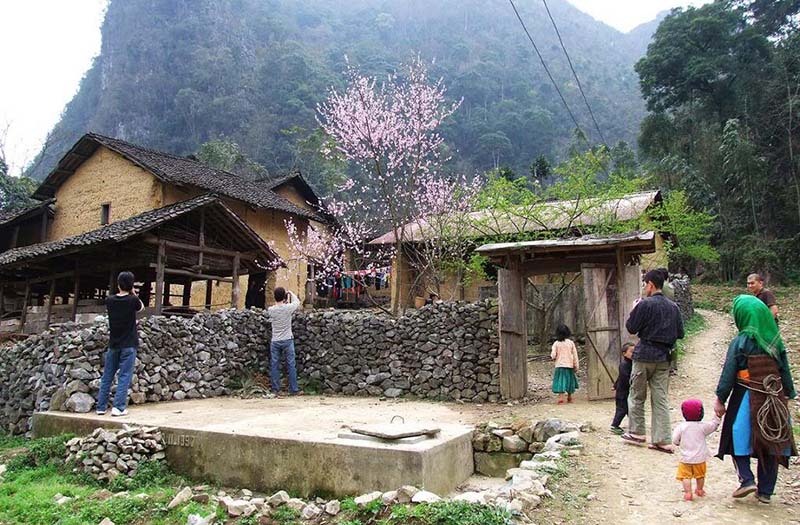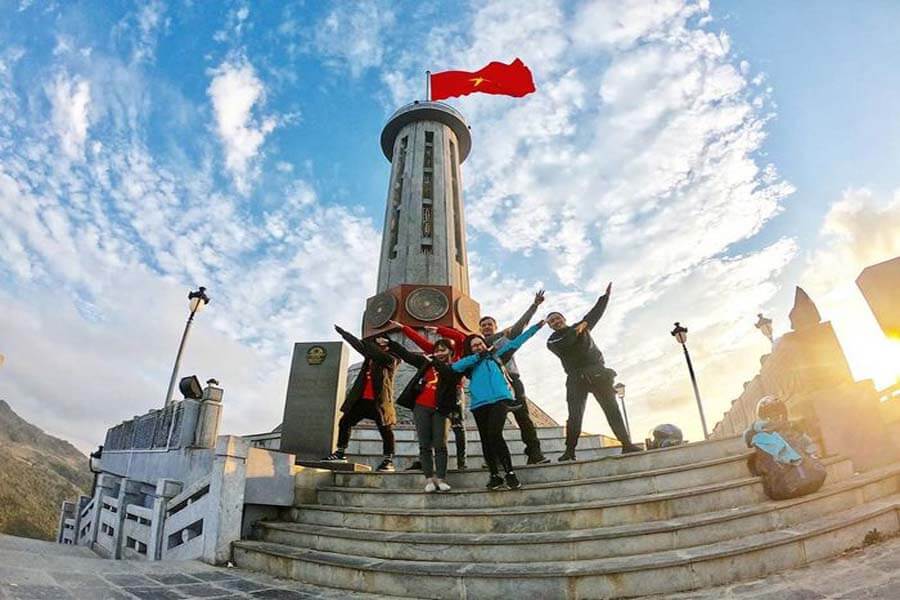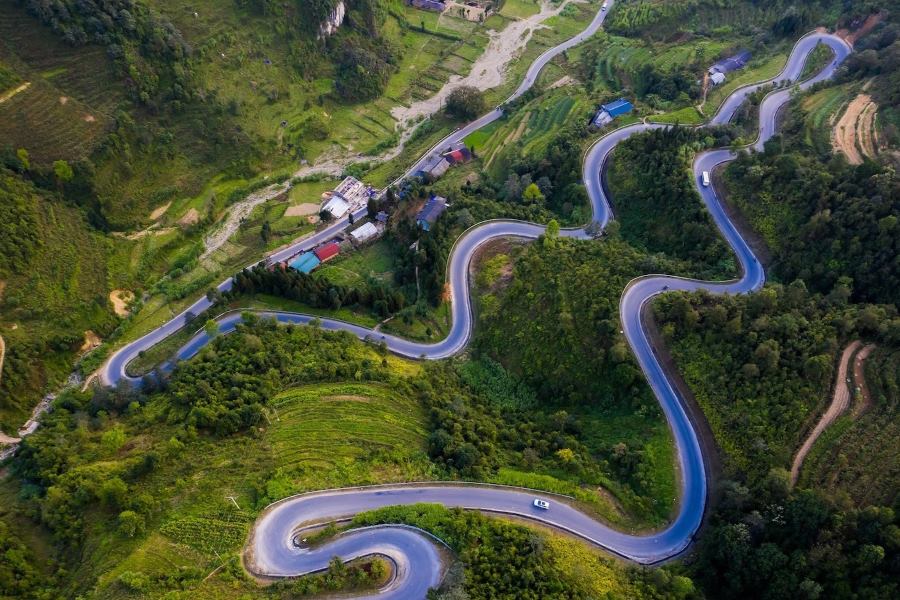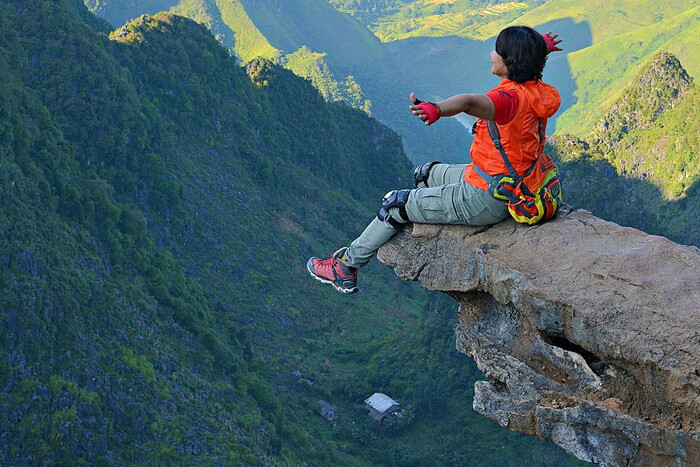Planning the Ha Giang Loop? Most headline sights - Dong Van Karst Plateau, Lung Cu Flag Tower, Ma Pi Leng Pass - sit inside Vietnam’s regulated land-border area. Foreign travelers should carry a border travel permit and present it at random police checkpoints along the route. This guide explains who needs the permit, where to get it, how much it costs, and what to expect at checkpoints.

Recommended Tours for You:
Do you actually need a permit?
Yes, in practice. The classic Loop runs through border districts and communes where foreign visitors are expected to hold a border travel permit (“Giấy phép vào khu vực biên giới”). You might not be stopped every day, but random checks do happen - especially near towns or on weekends/holidays. Carrying the permit avoids delays and possible fines.
Typical districts covered: Quan Ba, Yen Minh, Dong Van, Meo Vac. These house most of the Loop’s highlights, so plan on having the permit if your itinerary includes them.
Where to get the Ha Giang permit
1) Through your accommodation or tour (easiest)
Most hostels/hotels and tour operators in Ha Giang City can arrange the permit within the same day. You’ll provide passport details (and usually your motorbike plate number if already rented), pay a small fee, and pick up the paper slip before riding.
2) Apply in person in Ha Giang City
Travelers commonly apply at the Immigration/Police desk on Tran Phu or Nguyen Trai in Ha Giang City. Office locations and hours can change, but expect daytime hours with a lunch break; some desks operate into the evening. Bring your passport, visa details, cash, and your bike plate number if you’ve already rented.

3) Already up north? Apply in Dong Van
If you started counter-clockwise and forgot the permit, riders report you can apply in Dong Van town (ask your accommodation for the current desk). Processing is usually quick if you have your passport.
How much does it cost & how long is it valid?
-
Cost: ~200,000–250,000 VND per person (roughly US$10). Prices vary slightly by provider and season.
-
Processing time: typically 10–20 minutes once your documents are checked.
-
Validity: commonly up to 30 days from issue (confirm locally when applying).
What you receive: a paper permit listing your name and the border districts/communes you may enter. Keep it flat and dry with your passport.
What documents should you carry?
At checkpoints or when checking into accommodation inside border communes, officers may ask for several items:
-
Border permit – the paper slip with your details and allowed areas.
-
Passport (+ visa) – identity verification.
-
Valid motorcycle licence + 1968 IDP if you self-ride – enforcement has tightened; without a valid licence, you risk fines and no insurance coverage.
-
Bike papers – rental contract and registration (“blue card”) or a copy with matching plate number.
Don’t have a valid licence? Consider an easy-rider/driver or a Jeep tour - safer legally and less stressful on mountain roads.

Where are the checkpoints?
Checkpoint locations can shift, but they’re commonly set near gateways into the border zone and around larger towns on the Loop:
-
Tam Son (Quan Ba / Heaven Gate area)
-
Yen Minh
-
Dong Van
-
Meo Vac / Ma Pi Leng area
Expect more checks during holidays, festival weekends, or after bad weather when safety campaigns are active.

Step-by-step: getting your permit (10 - 20 minutes)
-
Choose how to apply – ask your accommodation to arrange, or go to the immigration/police desk in Ha Giang City.
-
Prepare – passport (and visa), cash ~200–250k VND, and motorbike plate number if already rented.
-
Submit & wait – fill in your details; staff prints your permit.
-
Check details – name, passport number, and districts allowed. Keep the permit with your passport at all times.
-
Forgot? If you’re already in Dong Van, ask your hotel where to apply locally.
What happens at a checkpoint?
-
Pull over safely, remove your helmet, and greet the officer.
-
Present permit + passport + licence/IDP + bike papers.
-
Officers may just glance and wave you through; if there’s an issue (e.g., no licence), be polite and request a written receipt for any fines.
Tip: Having documents organized speeds things up. A small folder with transparent sleeves works well in rain.
Practical tips to avoid problems
-
Sort the permit the day before you ride; don’t gamble on “no checks today.”
-
Photograph the permit and passport page as a backup (the original still must be shown).
-
Plan conservative daily distances (mountain riding is slower than it looks). Build buffer time for weather or road works.
-
Avoid night riding; visibility and livestock on the road make accidents more likely.
-
Refuel early; stations can be sparse between towns, especially in the late evening.
-
Respect local etiquette in ethnic minority villages (ask before photographing, dress modestly, no drones where prohibited).

FAQ
Do Vietnamese citizens need this permit?
The requirement primarily targets foreign visitors entering border communes. Locals usually don’t need the same permit; ask the local desk if unsure.
Is the permit checked every time?
No. Checks are random and more frequent near major towns or on busy days—carry it anyway to avoid being turned around.
Can I still get the permit if I start north of Ha Giang City?
Yes. Travelers have obtained it in Dong Van; your hotel can point you to the current counter.
How long is it valid?
Commonly up to 30 days from issue. Policies and office hours can change—confirm when you apply.
Is the Ha Giang Loop safe for beginners?
It’s rideable with caution, but mountain passes and changing weather can be challenging. If you lack experience or a valid licence, choose an easy-rider/driver or Jeep.
Bottom line
For the classic Ha Giang Loop through Quan Ba – Yen Minh – Dong Van – Meo Vac, carrying a border travel permit is the simplest way to keep your trip smooth. Arrange it via your accommodation or apply at the immigration/police desk in Ha Giang City, then ride prepared with passport, licence/IDP, and bike papers. A few minutes of admin saves a lot of roadside hassle.






